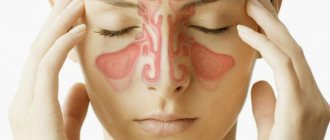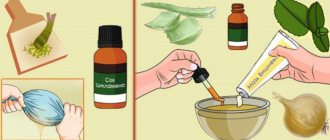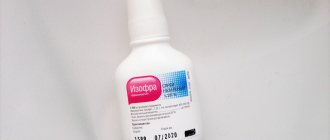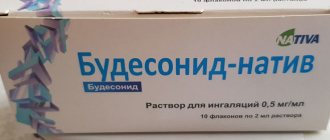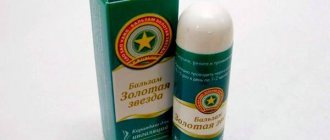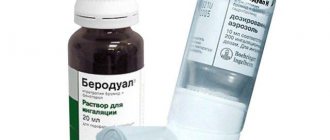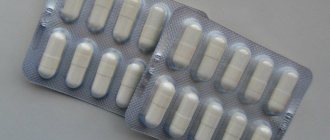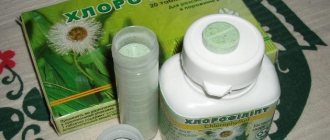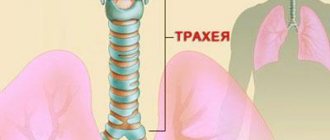Polydexa is a pharmacological drug that contains many multidirectional medicinal substances. The product is available in several forms (drops and spray), so everyone can choose the method of use that is most convenient.
Polydexa is most often used for sinusitis, since the spectrum of action of this drug is excellent for influencing all parts of the etiology and pathogenesis of inflammation of the maxillary sinuses. The antibacterial compounds included in the composition allow you to directly influence the cause of the inflammatory process, and vasoconstrictors reduce the amount of exudate and swelling of the mucous membrane.
Composition of the drug Polidexa
This pharmaceutical product, unlike most other pharmaceuticals, contains not one active ingredient, but four. Moreover, all drugs belong to different pharmacological groups and cause different therapeutic effects in the patient’s body.
This composition allows, with the help of just one drug, a comprehensive effect on the pathological focus of inflammation of the maxillary sinuses.
So, the main active ingredients of Polydexa are:
- Dexamethasone is a chemical compound of a hormonal nature, which is an analogue of a hormone produced in the adrenal glands. This glucocorticoid allows you to suppress the allergic component of inflammation, as well as reduce the permeability of vascular walls, exudation and edema;
- Neomycin is an aminoglycoside antibacterial drug that allows you to kill bacteria that cause the development of sinusitis;
- Polymyxin is an antibiotic based on polypeptides. Affects gram-negative microflora.
- Phenylephrine is a substance that acts on alpha-adrenergic receptors and causes vascular smooth muscle contraction and contraction. Vasospasm allows you to reduce the production of pathological exudate and eliminate swelling of the mucous lining of the nose and paranasal sinuses.
Two compounds with antibacterial action in the composition of the medicine are needed in order to cover the spectrum of action of all possible flora, since there is no one specific causative agent of sinusitis (different bacteria can lead to this disease in different people).
In addition to the pharmacological compounds described above, the Polydex preparation includes auxiliary components:
- Distilled water;
- Lithium chloride;
- Lithium hydroxide;
- Polysorbate.
What is this?
Sinusitis, as is known, occurs due to the appearance and proliferation of pathogenic bacteria in the maxillary sinuses. Inflammatory processes lead to the fact that the normal outflow of fluid from the nose is disrupted. Microorganisms find themselves practically in a confined space, receiving ideal conditions for further reproduction.
Often, antibiotics are used to treat sinusitis. Moreover, there are systemic antibiotics that are actively used in many medications, and there are also local antibacterial agents. Their advantage is that they are almost not absorbed, and this plays a significant role in health safety and protection from side effects.
Polydexa is one such drug that can be used with almost no fear, despite the fact that the drug contains antibiotics. The use of Polydex with phenylephrine promotes the treatment of sinusitis with simultaneous minimal consequences for the body due to the effects of the antibiotic.
Polydexa is a combination drug that helps to narrow blood vessels and eliminate inflammatory processes in the nose. An important argument in favor of this nasal spray is the fact that the active ingredients of the drug suppress the activity of microorganisms that lead to sinusitis and further complications.
Release forms and composition
Polydexa is also a universal drug, since it has two release forms:
- nasal spray,
- ear drops.
Polydexa, intended for the treatment of sinusitis, is available in the form of a spray. The volume of the can is 15 milliliters. But ear drops have a slightly smaller volume, 10.5 ml. To accurately dose the medicine, the manufacturer offers a special pipette in the kit.
Reviews clearly demonstrate that Polydexa is highly effective in the fight against sinusitis and sinusitis. Of course, the final choice in favor of Polydex is recommended to be made only after agreement with your doctor. It is strongly not recommended to self-medicate by purchasing drops containing antibiotics.
Its composition can tell a lot about a drug. If we talk about the composition of Polydex, it includes the following components:
- phenylephrine,
- dexamethasone,
- polymyxin,
- neomycin.
Each of the presented components plays its role, forming in the complex a highly effective drug against sinusitis called Polydexa.
- Dexamethasone is a glucocorticosteroid that helps reduce the manifestations of allergic reactions. This substance is also responsible for eliminating inflammation and strengthening the walls of blood vessels,
- A substance called phenylephrine has a vasoconstrictor effect and enhances the effect of adrenaline,
- Polymyxin and neomycin. These are two antibiotics that belong to the aminoglycoside group. It is with their help that when using Polydex for sinusitis, the growth and development of pathogenic bacteria and microorganisms in the nasal sinuses is suppressed.
What forms of release are there?
The drug Polydexa is most often used in otorhinolaryngological practice, therefore there are two forms of release that are most convenient to use for administration into the nasal cavity and ear:
- Spray in a 15 ml bottle made of dark glass and with a special spray at the end;
- Solution for instillation (10 and a half milliliter bottle with pipette).
The spray is used to irrigate the nasal passages. And the drops are usually prescribed for the treatment of ear diseases (however, they can also be used for the nose); they do not contain phenylephrine.
Reviews of the use of Polydex for sinusitis
Most patients were satisfied with the use of the drug, since with a maximum course of 10 days, Polydexa made it possible to eliminate all symptoms of sinusitis already on days 4-6. After this, the spray was used as an adjuvant to prevent the re-development of the inflammatory process.
Review of Polydex
But due to individual intolerance to the drug, as well as due to incorrectly selected doses, a number of patients had to face the following side effects:
- severe allergic reaction in the form of swelling of the nasal cavity;
- severe swelling of the throat, which can create significant breathing problems;
- skin rashes and itching, including in the sinuses;
- sometimes rashes appeared around the nasal cavity, where the drug liquid got in;
- increased blood pressure, especially if there is a history of arterial hypertension.
If any undesirable consequences occur, you must stop using Polydexa. The fastest results in the treatment of sinusitis with medication were observed if it was combined with antiseptics and moisturizing vasoconstrictor drops. At the same time, many patients recommend using nasal rinsing solutions 1-2 times a day, and then instilling Polydex. Thus, faster and better absorption of the active substance was observed.
Release form of the drug Polideks
Attention! Experts insist that Polydex should be used only if other drops or sprays have not been able to have the desired effect within 3-5 days and there is severe thickening of the sputum and pain in the frontal lobe. In other cases, treatment may be dangerous.
What therapeutic effect does Polydexa have?
Dexamethasone realizes its effects by inhibiting the release of various biological substances and inflammatory mediators from mast cells (it also indirectly reduces the number of these same mast cell elements). Also, this glucocorticoid hormone has a membrane-stabilizing effect, which contributes to the development of an anti-edematous effect.
Phenylephrite is a direct activator of alpha-type adrenergic receptors. By imitating the effect of the sympathoadrenal system on the vessels of the nasal mucosa, it causes a spasm of the smooth muscles of the microvasculature. Because of this, the blood supply to the capillaries decreases and, as a result, the exudation into the cavity of the maxillary sinuses and nose decreases.
The antibiotic Neomycin blocks normal protein synthesis in the microbial cell by inhibiting the synthesis of matrix ribonucleic acid.
Polymyxin realizes its antimicrobial effect due to the destruction of the integumentary membranes of bacterial cells.
How to use Polydex for various forms of sinusitis?
It is worth remembering that the treatment of sinusitis with Polydexa differs depending on the severity and extent of the pathological process. The dosage of the drug and the frequency of its use are determined by the attending otorhinolaryngologist.
There are a number of general rules for administering the drug:
- Strictly follow all doctor's recommendations; you cannot change the dose of the medicine yourself.
- Before administering the medication, you need to blow your nose well or rinse your nose with warm saline solution.
- When administering the drug, the bottle is kept in a vertical position.
- After the procedure, the spray tip should be rinsed under warm running water.
Isofra or Polydex – which is better?
These two drugs have become very popular recently. It was found that for similar symptoms, one doctor prescribes Izofora, and another prescribes Polydex.
If a patient decides to be treated for bacterial glands, the pharmacy will most likely offer one of the medications we are considering. Are these medicines similar, and what is better for colds - isofra or polydex?
Let's do a little comparative assessment to find out the composition of the drugs, release forms, age recommendations for use and, of course, indications and contraindications for treatment. This will help us answer the question of how the medications work and will help the patient understand whether it is better to choose Isofra or Polydex, especially if green rhinitis is present.
Isofra (France) – instructions for use
Isofra is an antibacterial agent from the group of aminoglycosides, available in the form of a nasal spray of 1.25% (15 ml) and is used in otolaryngological practice exclusively for local treatment of the upper respiratory tract. The main active ingredient is framacetan sulfate.
- The drug has a pronounced antimicrobial effect, rarely develops resistance to pathogenic microorganisms, therefore the scope of action of isofra extends to a wide range of gram-positive and gram-negative bacteria.
- When is Isofra prescribed?
- Isofra-Spray is indicated for use in bacterial cases of runny nose, when there is snot with an unpleasant odor and color (yellow, green, brown, mixed with pus), and especially for the following diseases:
- complex rhinitis due to viral infections;
- nasopharyngitis;
- sinusitis (acute and chronic);
- sinusitis - without damage to the nasal septum;
- for the prevention of bacterial rhinitis during surgical (surgical) treatment.
Contraindications
- individual intolerance to framitin sulfate;
- tendency to be allergic to antibacterial agents (relative contraindication);
- not used until 12 months of the child’s life;
- pregnancy and breastfeeding (the drug has not been sufficiently studied, there is a possibility of toxic effects on the fetus).
Side effects
Reactions to the drug are very rare and may manifest as minor local symptoms:
- burns;
- itches;
- hives;
- blushes.
After removing isophores, all negative symptoms quickly disappear.
Dosage
In adults, isofra is administered intravenously up to six times a day; in children, the maximum dose is three injections per day (one “pike” in each nostril). Only the doctor prescribes the frequency of use and the exact dosage of the injection.
The average price of a spray is around 280 rubles.
Polydexa (France) - instructions for use
Antibacterial Polydex is available as a nasal spray (15 ml) and ear drops (10.5 ml). In our article we will look at the spray 'Polydex with phenylephrine' for the treatment of bacterial snot. The drug contains four active substances:
- neomycin sulfate - antibiotic (aminoglycoside);
- polymyxin sulfate B - antibiotic, cyclic polypeptide;
- Sodium metasulfenzoate dexamethasone is a glucocorticoid;
- Phenylephrine hydrochloride is an adrenomimetic, stimulating mainly alpha-adrenomorphants.
What can replace Polydex in the treatment of sinusitis?
There are no analogues that would have an absolutely identical composition to Polydexa. However, you can select substitutes with a similar composition and similar therapeutic effect. Maxitrol contains a glucocortioid, polymyxin and one antibiotic, so it may well compete with Polydexa.
You can also try using Sofradex, Isofra and Maxitrol as an analogue. But these drugs show less effectiveness, since they do not have such a multicomponent composition.
Contraindications and side effects of Polydex
Adverse reactions develop quite rarely and are mainly local (at the injection site). The most common symptoms:
- Burning and tingling in the nose;
- Itching;
- Dryness;
- Enanthema (rash on the mucous lining).
Polydexa is contraindicated for kidney problems, as well as for people suffering from coronary heart disease and hypertension. Inflammations of viral etiology cannot be treated with this drug, since dexamethasone, which is included in the composition, can aggravate the course of the pathological process.
How to use drops correctly for sinusitis
As the Polydex instructions say, drops should be used only after diagnostics have been carried out and the correct diagnosis has been made. Otherwise, medicine with phenylephrine may adversely affect the patient’s health.
When carrying out aerosol treatment, a classic treatment regimen is used. Patients whose age is less than 15 years require one injection into each nostril 3 times a day.
Adult patients are allowed to spray the medicine in the nasal cavity 5 times a day. Before using the drops, you need to blow your nose well, especially if the patient has a severe and frequent runny nose.
A more accurate dosage of the drug during purulent sinusitis will be prescribed by a doctor who will take into account the medical history, as well as the patient’s health condition and the severity of the inflammation.
Acute and chronic sinusitis must be treated for 5-10 days. If the patient's condition improves, the doctor may prescribe the use of the drug for a few more days.
As numerous reviews show, proper use of the medicine allows you to completely get rid of the disease in one course of treatment. The main thing is to spray the drops correctly and also monitor your health.
However, it is not always possible for patients to treat sinusitis with Polydex aerosol. Contraindications for the spray include:
- high sensitivity of the patient’s body to the main substance or additional components of the drug;
- the patient's age is less than 2.5 years;
- breast-feeding;
- renal failure (sometimes the use of Polydex is prohibited for other problems with the paired organ).
If there is at least one contraindication, taking this antibiotic is prohibited, as otherwise it may negatively affect the health and functioning of the respiratory organs. It is especially important that the child takes Polydex correctly, because the proper functioning of the respiratory organs directly depends on this drug.
It is important to note that you should not exceed the dosage of drops prescribed by the doctor, believing that in this way the medicine can have a faster therapeutic effect, as this can only harm the mucous layer lining the maxillary cavities.
The peculiarity of this medicine is that it should not be taken by children under 2.5 years of age, however, if other drugs do not help to completely cure sinusitis, this antibacterial agent can be used strictly according to the instructions.
However, this should only be done after the medicine has been prescribed by a doctor. In this case, Polydex helps to completely cure the inflammation and also normalizes the child’s breathing.
